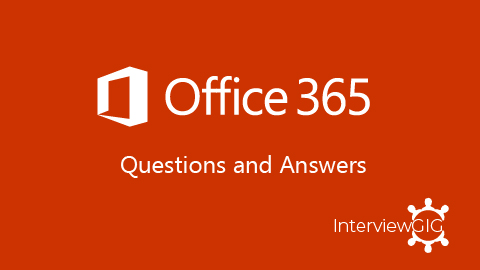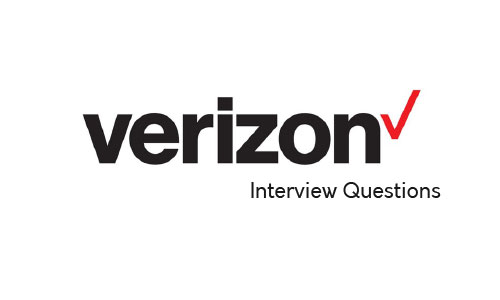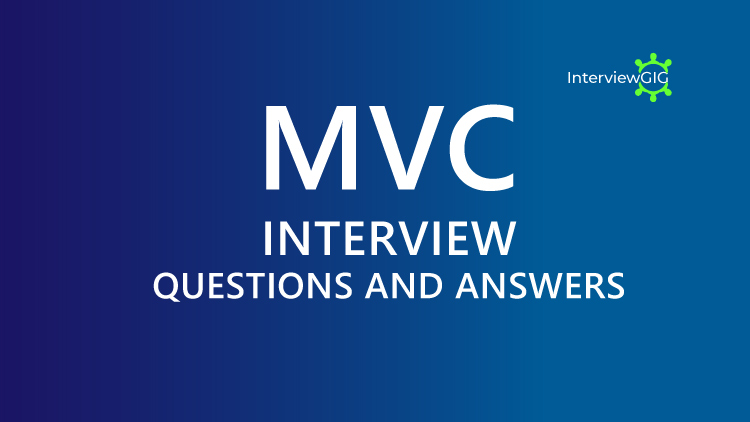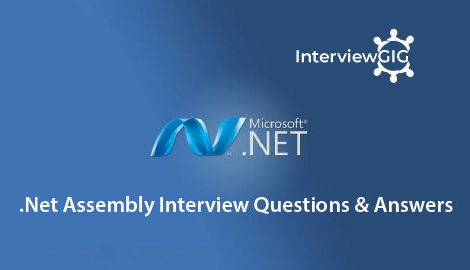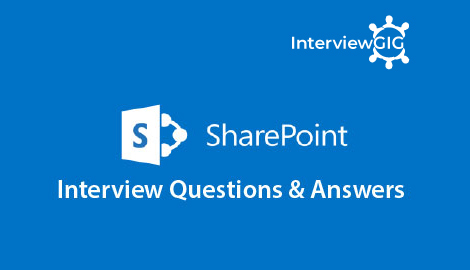Microsoft Azure Interview
Introduction to Microsoft Azure:
Microsoft introduced Azure in October 2008. The cloud platform was originally called Windows Azure, which was later renamed as Microsoft Azure in 2014, is a cloud computing service created by Microsoft for building, testing, deploying, and managing applications and services through a global network of Microsoft-managed data centers. It provides software as a service (SaaS), platform as a service and infrastructure as a service and supports many different programming languages, tools and frameworks, including both Microsoft-specific and third-party software and systems.
Azure provides PaaS and IaaS services; it also supports different programming languages, tools and frameworks for Microsoft software and other third-party software and systems. In June 2012, Azure released an update with new features in cloud services, data management and media services. Azure’s main services include websites, virtual machines, cloud services, business analytics, data management, messaging, networking and integration.
Azure was announced in October 2008 and released on February 1, 2010 as “Windows Azure” before being renamed “Microsoft Azure” on March 25, 2014.
Microsoft Azure services:
There are number of services are used in Microsoft Azure (apx 600). Below services are mainly used.
Computer services– This service provide virtual machines, containers, batch processing and remote application access.
Web services and mobile services: This service support the development and deployment of web and mobile applications, and also offer features for API management, notification and reporting.
Data storage services: This category includes Database as a Service offerings for SQL and NoSQL, as well as unstructured and cached cloud storage.
Analytics: This service provide distributed analytics and storage, as well as real-time analytics, big data analytics, data lakes, machine learning and data warehousing.
Development: This service help application developers share code, test applications and track potential issues. Azure support a range of application programming languages, including JavaScript, Python, .NET and Node.js.
Networking Services: this group includes virtual networks, dedicated connections and gateways, as well as services for traffic management, load balancing and domain name system (DNS) hosting.
Media and content delivery network (CDN): This service include on-demand streaming, encoding and media playback and indexing.
Hybrid integration: these are services for server backup, site recovery and connecting private and public clouds.
Identity and access management (IAM): These offerings ensure only authorized users can employ Azure services and help protect encryption keys and other confidential information.
Internet of Things (IoT): This service help users capture, monitor and analyze IoT data from sensors and other devices.
Management and security: This product help cloud administrators manage their Azure deployment, schedule and run jobs, and create automation. This product group also includes capabilities for identifying and responding to cloud security threats.
What is Azure?
Azure is a comprehensive set of cloud services that developers and IT professionals use to build, deploy and manage applications through our global network of datacenters. Integrated tools, DevOps and a marketplace support you in efficiently building anything from simple mobile apps to internet-scale solutions.
What is Microsoft Azure?
Cloud computing is the concept and this concept has been implemented by many companies. For example, Amazon implemented it and named their product as Amazon EC2 or Amazon web services, Google call it as Google App Engine and so on.
On similar lines Microsoft also created a product based on cloud computing concept and it is called as “Microsoft Azure”. So MS Azure provides a platform with cloud computing capabilities so that you can get all the benefits of cloud computing.
What is Windows Azure? (Before Microsoft Azure)
Windows Azure is created by Microsoft, it is a cloud computing infrastructure and platform. It is designed for working on the global network of Microsoft. It is for building, managing and deploying services and applications. Windows Azure supports various programming languages, tools, and frameworks. It can be included in both Microsoft specific and third-party systems and software.
Azure provides an infrastructure of services and platforms as services. It is also an open and flexible cloud platform that makes it easy to work on the global network. It helps us to quickly create, manage and deploy applications on the global network.
What is Microsoft Azure Blobs?
‘Blob’ Means Binary Large Object. Blobs include images, text files, videos and audios. There are three types of blobs in the service offered by Windows Azure namely block, append and page blobs.
Block blobs are collection of individual blocks with unique block ID. The block blobs allow the users to upload large amount of data.
Append blobs are optimized blocks that helps in making the operations efficient.
Page blobs are compilation of pages. They allow random read and write operations. While creating a blob, if the type is not specified they are set to block type by default.
All the blobs must be inside a container in your storage.
What is Azure Queues?
Azure queues are a very similar concept that is used to store the messages in a queue. The main reason for using queues is to provide loose connectivity among various components. For example, we have two components of an application to exchange data. Here one of them is on premise and one exists in the cloud. Here if we use a web service to exchange data we have the following issues:
Both components should be online simultaneously; if one partner is down, then the communication will not work.
It’s difficult to scale up if more work is present.
What is the difference between Windows Azure Queues and Windows Azure Service Bus Queues?
Windows Azure Queues: Windows Azure Queue Storage is a service for storing a large number of messages that can be accessed from anywhere using HTTP or HTTPS. A single message can be up to 64KB in size. So, a queue may contain millions of messages. It is basically a part of Windows Azure Storage and enabled with a REST based architecture.
Service Bus Queues: Service Bus queues support brokered messaging communication. Queues provide First In, First Out (FIFO) message delivery, in other words messages are received and processed by the receivers in the order they were added to the queue.
What is DocumentDB?
DocumentDB is a NoSQL document-oriented database and records saves in Key-value pairs. It’s same as the other NoSQL document-oriented databases such as MongoDB.
Features:
It’s provide rich query API and “SELECT” queries to fetch data.
Any type of data such as attachments, binary, can be saved.
Quickly find specific records (documents) using “Keys”.
What is the difference between Table Storage and SQL Azure Table?
Table storage:
- This is NoSQL store on Azure
- As NoSQL, the data is stored in Key-Value pair combination and data is referred as an
- Schema is not enforced while storing the data.
- Combination of partition and row key is treated as unique for an entity.
- Can’t have relationship between tables.
- Being key-value store, we can’t define objects such as stored procedures, Views, functions.
- General usage is observed for storing diagnostics information, error log information.
SQL Azure Table:
- This is relational store on Azure
- The data is stored in Rows and Columns Combination.
- Schema is enforcing while storing the data. If schema is violated, then error is thrown.
- We can define relationships between tables such as foreign key.
- We can create stored procedures, views, functions.
- Used widely in transaction-based systems.
What is cloud computing?
Cloud computing is basically a great level of abstraction over the infrastructure that can help you to focus more on your business logic without having to worry about hosting or infrastructure needs. This is the general term used for delivering the hosted services over the internet. In cloud computing the computing resources are providing “as a service”.
What is purpose of cloud service configuration file (.cscfg)?
Every cloud service type of project contains. cscfg file and primarily is used for storing –
Number of role instances to deploy for each role in cloud service project
Thumbprint of certificates used if any
And most important, User defined configuration settings
The primary aim or purpose of this file is to allow configuration changes in production environment without downtime of your application.
What are the benefits of cloud computing?
- Scalability
- Agility
- High Availability
- Pay as you go
- Moving from Capex to Opex
- Fault Tolerance
- High Response Time
- High Bandwidth
- Low Latency
How can Microsoft Azure help your business?
Dynamics CRM or ERP software like Dynamics AX, NAV or GP, moving them to the Azure cloud provides cost, efficiency and productivity benefits that will transform your business. Imagine your people empowered with up-to-date customer information at any moment from any platform, in any location.
For those that are building their own applications, Azure provides a variety of benefits. We’ve written about the top Azure benefits previously, but there are some benefits that really stand out for developers. Such as, ensuring that you are always working with the most recent version of the code. Thanks to the automatic backup and retrieval features of Azure cloud storage, this is easier than ever.
Microsoft prides itself in Azure’s ability to scale to any workload. So whether you run a small company or a multi-million dollar corporation, Microsoft / Windows Azure will be able to to support you at a cost that flexes to your needs. Microsoft Dynamics on Microsoft Azure – learn more about Microsoft Dynamics AX, Microsoft Dynamics NAV, Microsoft Dynamics GP and Microsoft Dynamics CRM on Azure with SaaSplaza.
What is guest OS?
It is the operating system that runs on the virtual machine that hosts an instance of a role.
What is Azure Resource Manager (ARM)?
Azure Resource Manager (ARM) is the deployment methodology/strategy to deploy your Azure components in Azure (IaaS and PaaS components). It acts like container of multiple resources however it can span across regions and services. It is template driven, declarative and idempotent in nature.
What is Azure Redis Cache?
Redis is an open source (BSD licensed), in-memory data structure store, used as a database, cache and message broker. Azure Redis Cache is based on the popular open-source Redis cache. It gives you access to a secure, dedicated Redis cache, managed by Microsoft, and accessible from any application within Azure. It supports data structures such as strings, hashes, lists and sets, sorted sets with range queries, bitmaps and hyperloglogs and geospatial indexes with radius queries.
What is web role and worker role?
Web role: it’s a kind of container, which contain web application code and easily deployed on azure IIS.
Advantages: we don’t need to create virtual directory, and not worry about deployment server.
Worker role: it’s kind of background services, same as Windows application services.
It’s generally use to test business logic continursly and perform some actions.
What is Azure Search?
Azure Search is a cloud search-as-a-service solution that delegates server and infrastructure management to Microsoft, leaving you with a ready-to-use service that you can populate with your data and then use to add search to your web or mobile application. Azure Search allows you to easily add a robust search experience to your applications using a simple REST API or .NET SDK without managing search infrastructure or becoming an expert in search.
What are instance sizes of Azure?
Microsoft Azure will handle the load balancing for all of the instances that are created. The VM sizes are as follows:
Compute Instance Size CPU Memory Instance Storage I/O Performance
Extra Small 1.0 Ghz 768 MB 20 GB Low
Small 1.6 GHz 1.75 GB 225 GB Moderate
Medium 2 x 1.6 GHz 3.5 GB 90 GB High
Large 4 x 1.6 GHz 7 GB 1,000 GB High
Extra-large 8 x 1.6 GHz 14 GB 2,040 GB High
What are virtual machine scale sets in Azure?
Virtual machine scale sets are Azure compute resource that you can use to deploy and manage a set of identical VMs. With all the VMs configured the same, scale sets are designed to support true auto scale, and no pre-provisioning of VMs is required. So it’s easier to build large-scale services that target big compute, big data, and containerized workloads.
What is Network Security Group (NSG)?
A network security group (NSG) contains a list of Access Control List (ACL) rules that allow or deny network traffic to subnets, NICs, or both. NSGs can be associated with either subnets or individual NICs connected to a subnet. When an NSG is associated with a subnet, the ACL rules apply to all the VMs in that subnet. In addition, traffic to an individual NIC can be restricted by associating an NSG directly to a NIC.
Why Azure is sometimes referred to as Windows Azure and sometimes Microsoft Azure?
Microsoft released Windows Azure in 2010 and renamed it Microsoft Azure in 2014. So in practicality they are one and the same network, just with different names. The change was a branding effort by Microsoft to mark Azure as the public cloud platform for their customers. Additionally, it set the stage to make Azure the integrated cloud platform for Microsoft’s other services such as Microsoft Office 365, Microsoft Dynamics, Bing, OneDrive, Skype, and Xbox Live.
What is Microsoft Azure and Windows Azure used for?
Microsoft Azure: Microsoft Azure is used to develop and deploy software applications in the cloud, for use on any device type. As mentioned above, it has been developed in recent years to run seamlessly with other Microsoft Products. At SaaSplaza, for example, we work with our clients to help them run Microsoft Dynamics on Azure. Microsoft will initially release the latest version of Microsoft Dynamics AX, called AX7, only on Azure.
Windows Azure: Azure, of course, can also be used for building and deploying non-Microsoft applications. Azure supports many different operating systems, programming languages and frameworks. So, whether your developers work with Python, JavaScript, PHP or .NET, their application integrates and works with Windows, Android and iOS devices. Additionally, Azure supports background processing that can run continuously, as needed or when scheduled. For example, this makes it great for running data analytics without interfering with other.
